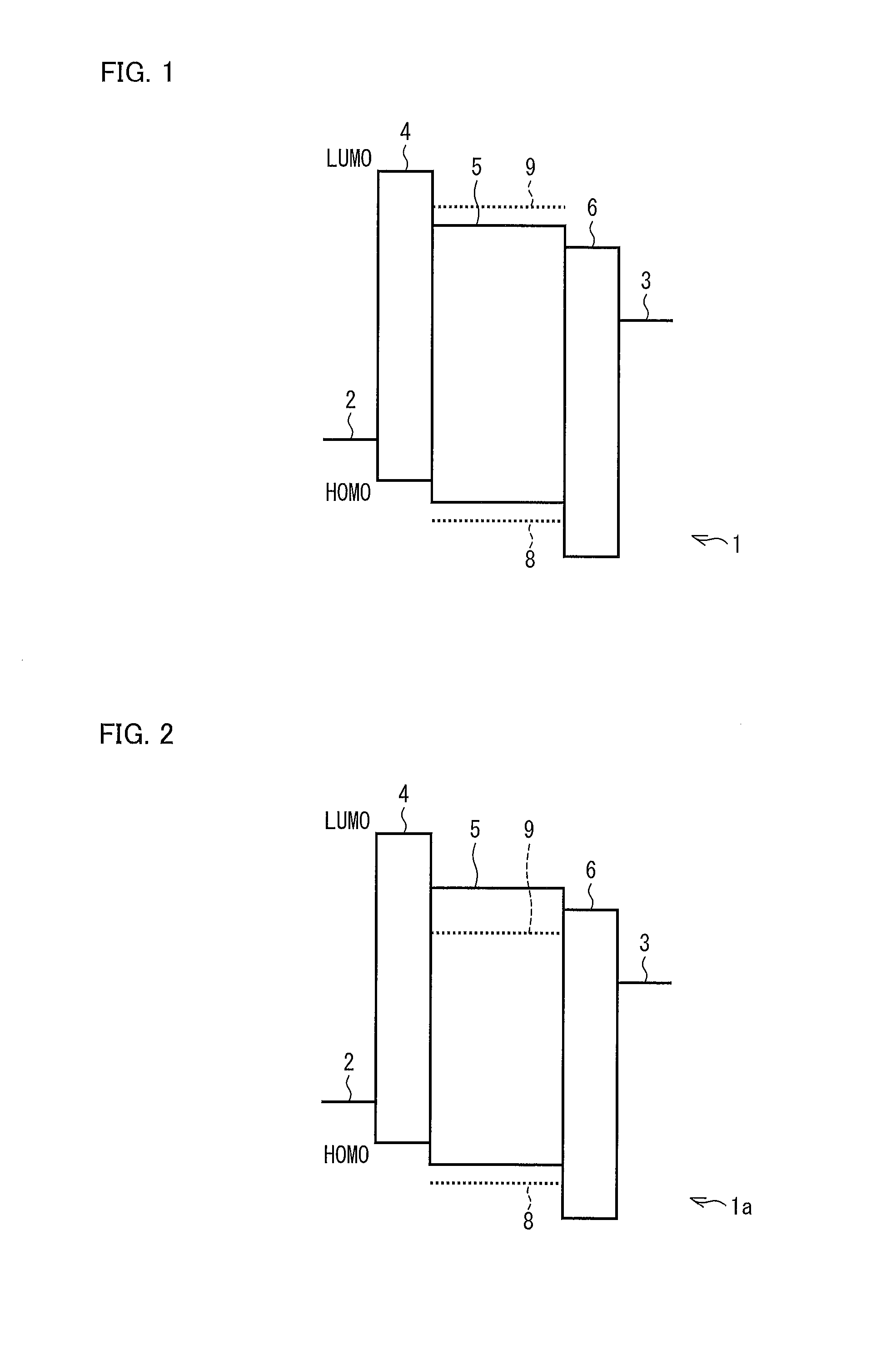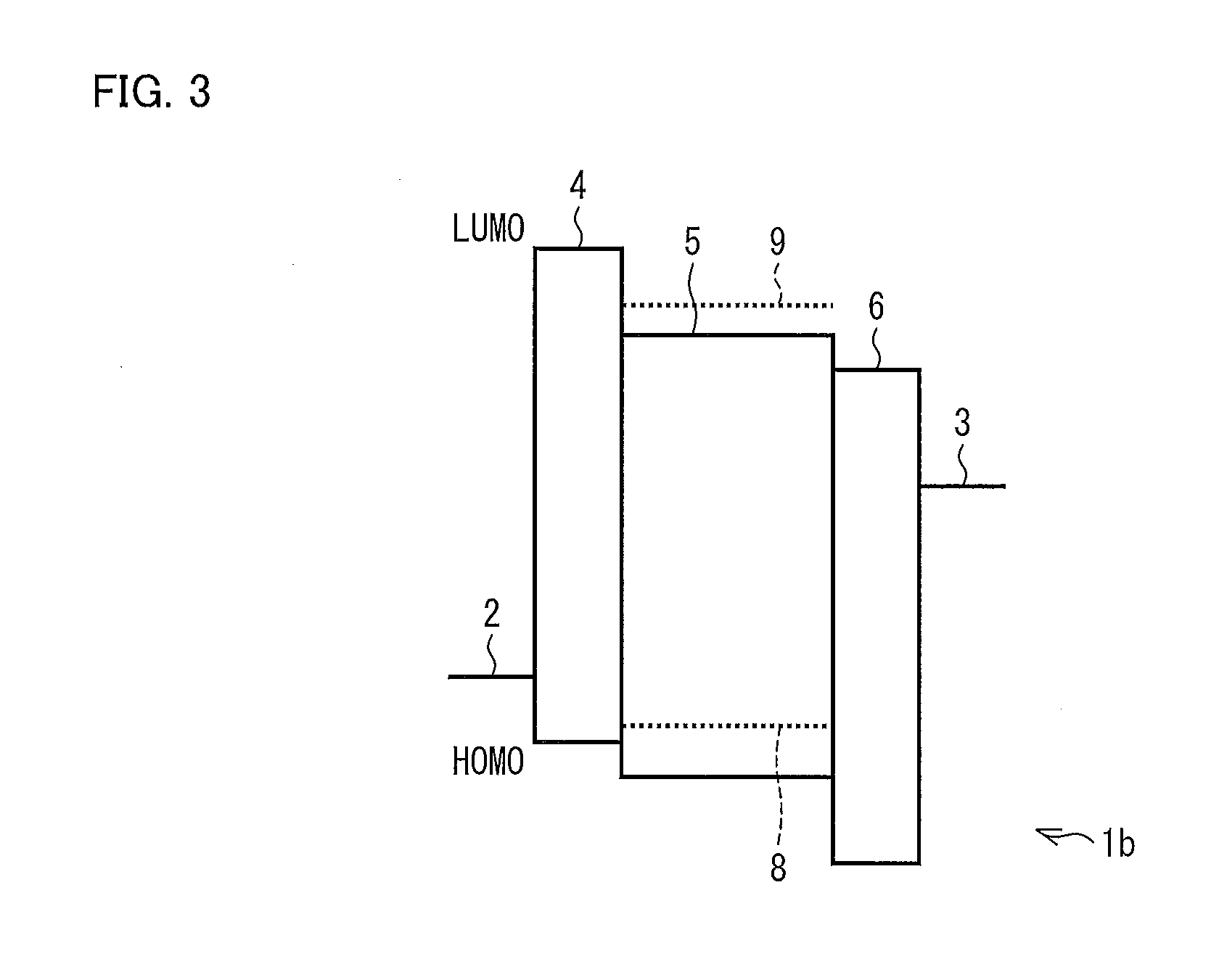Organic electroluminescence element, manufacturing method thereof, and organic electroluminescence display device
a technology of organic electroluminescence and manufacturing method, which is applied in the direction of electroluminescent light sources, organic semiconductor devices, thermoelectric devices, etc., can solve the problems of difficult material selection, low luminous efficiency, and inability to add phosphorescent materials having maximum 100% so as to reduce (i) positive holes, improve internal quantum yield rate, and improve luminous efficiency
- Summary
- Abstract
- Description
- Claims
- Application Information
AI Technical Summary
Benefits of technology
Problems solved by technology
Method used
Image
Examples
example 1
[0130]A silicon semiconductor film was deposited on a glass substrate by plasma chemical vapor deposition (plasma CVD), and was then subjected to a crystallization treatment so that a polycrystalline semiconductor film was prepared. Subsequently, the polycrystalline silicon thin film was etched so that a plurality of island-shaped patterns of polycrystalline silicon thin film are formed. Then, silicon nitride (SiN) serving as a gate insulating film was formed over the plurality of island-shaped patterns. Next, a titanium layer, an aluminum layer, and a titanium layer are stacked on the gate insulating film, in this order, so as to form stacked films (titanium-aluminum-titanium (Ti—Al—Ti)) each serving as a gate electrode, and then the stacked films were etched to be patterned. Subsequently, a source electrode and a drain electrode, each having a stacked film structure of Ti—Al—Ti, were formed on a corresponding one of the gate electrodes. A plurality of thin film transistors were th...
example 2
[0137]Note that steps, processed in Example 2 until before the step of forming an organic layer, are identical with those processed in Example 1. As such, descriptions of such steps are omitted here. The following description will therefore first discuss a step of forming a hole transport layer, and then discuss subsequent steps.
[0138]In this Example 2, a hole injection layer, having a thickness of 20 nm, was formed by depositing TAPC on anodes by the vacuum deposition method.
[0139]Then, a hole transport layer, having a thickness of 30 nm, was formed by depositing 1,3-bis(carbazole-9-yl)benzene (mCP) on the hole injection layer by the vacuum deposition method.
[0140]Subsequently, an emission layer, having a thickness of 30 nm, was formed by concurrently depositing tris(2,4,6-trimethyl-3-(pyridine-3-yl)phenyl)borane (3TPYMB) and FIr6 on the hole transport layer by the vacuum deposition method. In this case, PPT was doped with the FIr6 so that the FIr6 accounts for approximately 7.5% o...
PUM
 Login to View More
Login to View More Abstract
Description
Claims
Application Information
 Login to View More
Login to View More - R&D
- Intellectual Property
- Life Sciences
- Materials
- Tech Scout
- Unparalleled Data Quality
- Higher Quality Content
- 60% Fewer Hallucinations
Browse by: Latest US Patents, China's latest patents, Technical Efficacy Thesaurus, Application Domain, Technology Topic, Popular Technical Reports.
© 2025 PatSnap. All rights reserved.Legal|Privacy policy|Modern Slavery Act Transparency Statement|Sitemap|About US| Contact US: help@patsnap.com



